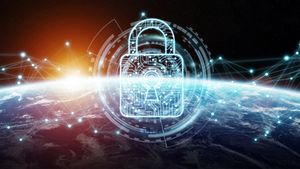
Sabre’s first quarter results were marked by resilient execution in the face of a challenging travel environment. Management attributed performance to stable transaction-based revenue streams and highlighted the impact of broad-based weakness in airline group bookings, particularly in the Asia-Pacific region, and a sharp decline in U.S. Government and Military travel. CEO Kurt Ekert noted that Sabre’s revenues are “largely tied to air distribution bookings rather than airline ticket prices,” providing some protection against industry pricing volatility. Despite these headwinds, the company reported improved adjusted EBITDA margins, supported by ongoing cost control initiatives and a growing contribution from its hotel B2B distribution and digital payments segments.
Is now the time to buy SABR? Find out in our full research report (it’s free).
Sabre (SABR) Q1 CY2025 Highlights:
- Revenue: $776.6 million vs analyst estimates of $794.6 million (flat year on year, 2.3% miss)
- Adjusted EPS: $0 vs analyst estimates of $0.01 (in line)
- Adjusted EBITDA: $149.6 million vs analyst estimates of $154.2 million (19.3% margin, 3% miss)
- Revenue Guidance for Q2 CY2025 is $786.4 million at the midpoint, below analyst estimates of $801 million
- EBITDA guidance for the full year is $630 million at the midpoint, below analyst estimates of $673 million
- Operating Margin: 13.3%, in line with the same quarter last year
- Total Bookings: 96.36 million, down 2.1 million year on year
- Market Capitalization: $1.28 billion
While we enjoy listening to the management's commentary, our favorite part of earnings calls are the analyst questions. Those are unscripted and can often highlight topics that management teams would rather avoid or topics where the answer is complicated. Here is what has caught our attention.
Our Top 5 Analyst Questions Sabre’s Q1 Earnings Call
- Jed Kelly (Oppenheimer & Company) asked how the macro environment compares to prior periods of expected industry softness. CEO Kurt Ekert explained that while the GDS market is now expected to decline 1% to 2%, Sabre’s transaction-based revenue model insulates it from some industry yield pressures.
- James Goodall (Redburn Atlantic) inquired about the pace and scope of SabreMosaic adoption. Ekert responded that most recent wins are for offer management modules, with a few full-stack conversions, and described the pipeline as strong among both existing and new airline customers.
- Victor Chang (Bank of America) sought more detail on Q1 softness and segment mix. Ekert noted the most acute declines were in U.S. Government and Military travel (down 30%) and cross-border flows from Canada and Europe, but saw recent improvement trends in Q2.
- Josh Baer (Morgan Stanley) pressed for clarity on the expected ramp in air bookings and whether high growth in Q3 and Q4 implies strong momentum into 2026. Ekert confirmed the back half of 2025 should see at least 20% growth, suggesting a strong carryover into next year.
- Alex Irving (Bernstein) asked about gross margin impacts from new agency volumes and the structure of the Coforge partnership. CFO Mike Randolfi stated new volumes have only a slightly lower margin due to mix, and that the Coforge deal combines fixed fees with performance-based incentives.
Catalysts in Upcoming Quarters
In the coming quarters, the StockStory team will be closely monitoring (1) the successful onboarding and ramp of large agency contracts, which are expected to drive substantial air distribution bookings growth, (2) the impact of the Hospitality Solutions divestiture on Sabre’s balance sheet and reinvestment capacity, and (3) the ongoing adoption of SabreMosaic and other AI-powered tools by airlines. Additionally, we will track cost discipline and margin trends as Sabre shifts toward higher-yield B2B and payments businesses.
Sabre currently trades at $3.29, up from $2.46 just before the earnings. Is the company at an inflection point that warrants a buy or sell? See for yourself in our full research report (it’s free).
The Best Stocks for High-Quality Investors
Donald Trump’s victory in the 2024 U.S. Presidential Election sent major indices to all-time highs, but stocks have retraced as investors debate the health of the economy and the potential impact of tariffs.
While this leaves much uncertainty around 2025, a few companies are poised for long-term gains regardless of the political or macroeconomic climate, like our Top 6 Stocks for this week. This is a curated list of our High Quality stocks that have generated a market-beating return of 183% over the last five years (as of March 31st 2025).
Stocks that made our list in 2020 include now familiar names such as Nvidia (+1,545% between March 2020 and March 2025) as well as under-the-radar businesses like the once-micro-cap company Kadant (+351% five-year return). Find your next big winner with StockStory today.
StockStory is growing and hiring equity analyst and marketing roles. Are you a 0 to 1 builder passionate about the markets and AI? See the open roles here.





